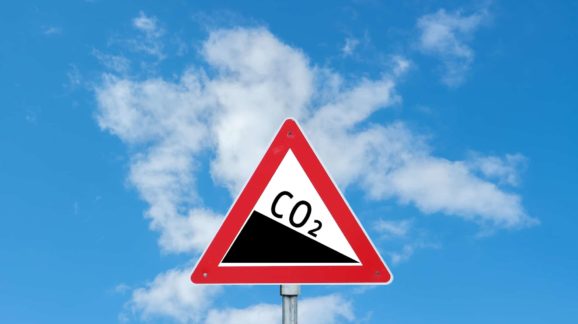New Study Projects Net Carbon Dioxide Benefits through at least 2050

 The benefits of carbon dioxide emissions are likely to exceed costs over the next 30 years, according to a new study published in the journal Environmental Economics and Policy Studies. The authors, Kevin D. Dayaratna of the Heritage Foundation, Ross McKitrick of Guelph University, and Patrick J. Michaels of the Competitive Enterprise Institute, expect the social cost of carbon (SCC) to be negative at least through the mid-21st century. A negative cost is another way of saying a net benefit.
The benefits of carbon dioxide emissions are likely to exceed costs over the next 30 years, according to a new study published in the journal Environmental Economics and Policy Studies. The authors, Kevin D. Dayaratna of the Heritage Foundation, Ross McKitrick of Guelph University, and Patrick J. Michaels of the Competitive Enterprise Institute, expect the social cost of carbon (SCC) to be negative at least through the mid-21st century. A negative cost is another way of saying a net benefit.
Over the next three decades, the agricultural benefits of rising carbon dioxide concentrations and longer growing seasons are projected to exceed the monetary costs of global warming-related economic damages. The results of the study also imply that the possibility of reaching catastrophic “tipping points” during the next 1,000 years is substantially less than in mainstream climate impact assessments. Or, putting it in my own words, there is no climate crisis.
Background
The social cost of carbon is a monetary estimate of the cumulative long-term damage of an incremental ton of carbon dioxide (CO2) emitted in a particular year. That estimate also represents the monetary value of avoiding or reducing a ton of emissions in that year.
The computer programs used to project SCC values are called integrated assessment models (IAMs) because they combine a climate model, which estimates the physical impacts of CO2 emissions, with an economic model, which estimates the dollar value of climate change impacts on agricultural productivity, energy costs, and other economic variables.
In federal agency analyses, the cumulative damage of an incremental ton of CO2 emissions is estimated from the year of the emission’s release until 2300. Because cumulative damages are estimated over such long time spans, SCC estimates are sensitive to the discount rates chosen to calculate the present value of future emissions and reductions. The lower the discount rate, the higher the present value of future climate damages and emission reductions, and vice versa.
Another key variable in IAM calculations is climate sensitivity, perspicuously defined in the new paper as the “long-term temperature change from doubling atmospheric CO2, after allowing sufficient time for the deep ocean to respond to surface warming.” The higher the sensitivity assumed in the model, the higher the present value of projected climate damages and emission reductions, and vice versa.
An underappreciated issue in SCC modeling is the carbon dioxide fertilization effect. Plants use the carbon in CO2 to construct their tissues. Decades of laboratory and field studies demonstrate that elevated carbon dioxide levels help most plants, including food crops, grow larger, faster, and utilize water more efficiently. Climate researcher Craig Idso, using a large CO2 concentration-response database and Food and Agriculture Organization economic data for 45 major food crops, estimates that rising CO2 concentrations boosted global crop production by $3.2 trillion during 1961-2011.
Federal agencies use three integrated assessment models to calculate the social cost of carbon: DICE (Dynamic Integrated Climate-Economy), PAGE (Policy Analysis of the Greenhouse Effect), and FUND (Framework for Uncertainty, Negotiation, and Distribution). DICE and PAGE set the carbon dioxide fertilization effect at zero despite the proven agricultural benefits of CO2 enrichment. Thus, DICE and PAGE are structurally biased, precluded by their very design from estimating net benefits from CO2 emissions.
Although FUND has a strong CO2 fertilization function, it has not been updated in light of recent studies finding more robust agricultural and ecological benefits than earlier research indicated. Moreover, federal agencies have not updated any of the integrated assessment models with climate sensitivity estimates from recent observational studies. Those studies produce lower estimates of climate sensitivity than the model-based estimates on which the IAM architects relied.
Accordingly, Dayaratna, McKitrick, and Michaels ran the FUND model with updated information on both carbon dioxide fertilization and climate sensitivity. Here is the Abstract of their study:
We explore the implications of recent empirical findings about CO2 fertilization and climate sensitivity on the social cost of carbon (SCC) in the FUND model. New compilations of satellite and experimental evidence suggest larger agricultural productivity gains due to CO2 growth are being experienced than are reflected in FUND parameterization. We also discuss recent studies applying empirical constraints to the probability distribution of equilibrium climate sensitivity and we argue that previous Monte Carlo analyses in integrated assessment models (IAMs) have not adequately reflected the findings of this literature. Updating the distributions of these parameters under varying discount rates is influential on SCC estimates. The lower bound of the social cost of carbon is likely negative and the upper bound is much lower than previously claimed, at least through the mid-twenty-first century. Also the choice of discount rate becomes much less important under the updated parameter distributions.